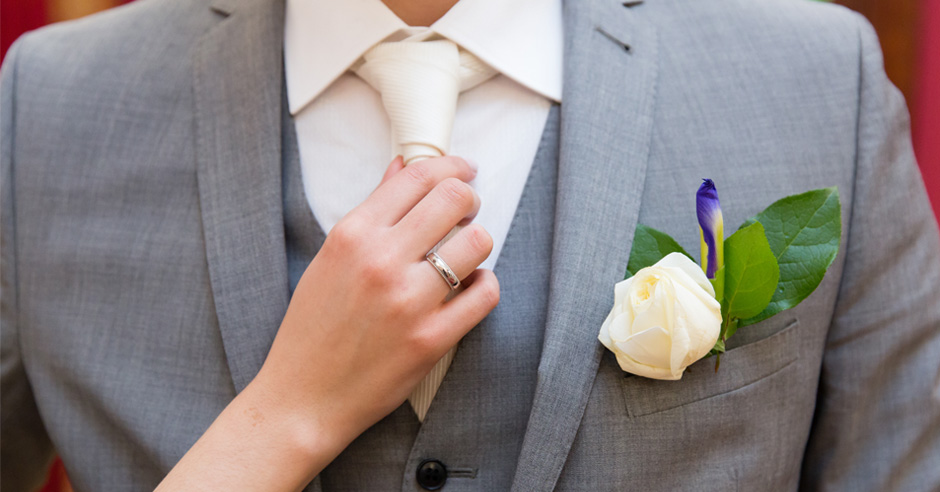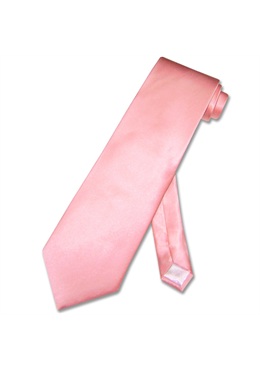
 Toggle menu
Toggle menu

 Toggle menu
MENU
Toggle menu
MENU

If you're like most guys, you grab a tie that matches (mostly), knot it up the way you learned when you were a boy, and you go. But as men's fashion becomes more nuanced, choosing an appropriate knot is more important than it was when you were a boy. The old Four-in-Hand might do in a casual pinch, but with different collars, body types, and levels of formality, understanding how to choose the best knot will elevate your look and the first impression you'll make.
There are as many knots for neckties as there are colors and patterns, but knowing just a few will enable you to complete your ensemble with style. Here we'll focus on three basic knots, all of which have variations you can experiment with. When you're ready to choose your knot, keep in mind the type of shirt collar you'll be wearing, and whether the event you're attending is more or less formal. A helpful rule - smaller, asymmetrical knots lean to the casual, while larger, symmetrical knots are more formal.
For casual events, an asymmetrical knot is entirely acceptable. The perfect knot for this occasion is the traditional Four-in-Hand. It's a smaller knot, which is fine, because casual shirts don't have the collar spread that more formal dress shirts do. The Four-in-Hand is easily loosened for the super casual look many men (and women) find appealing. Because the knot is small, it works best with skinny ties or medium-width ties. Because the length of your tie should be proportionate with your build, many taller men find the Four-in-Hand to work well. One alternative to the Four-in-Hand which some find easier to tie and to adjust is the St. Andrews. It's a slightly larger knot, and unlike the Four-in-Hand, is symmetrical, but still works well in casual settings.
For medium-spread collars, the Half-Windsor is the go-to knot. When tied correctly, it is symmetrical and requires less of the tie's length for the knot, so taller men prefer it. It is slightly more formal than the Four-in-Hand, but can be worn easily and appropriately at work, for professional meetings, in an office setting, or for job interviews. The important thing with this knot is to make sure the collar spread equals the knot. If the spread is too narrow, the Half- Windsor will look much too large and will throw off the proportionality of the ensemble.
The Full-Windsor knot, sometimes called the Double-Windsor, is the most formal knot of the three. This is the fullest, widest knot, and so goes best with wider and longer neckties. Its fullness gives it the most formal look and so is appropriate with formal, wide spread dress shirts. It's also a good choice if you have a larger neck and feel more comfortable in wider ties. Full- Windsors dominate formal events, with the exception of the bowtie, and are used widely at receptions, religious ceremonies, or formal business events such as annual board meetings. Because the Full-Windsor gets its fullness from a second wrapping, a longer tie should be used. This is typically a 61"-64" length, or extra-long, necktie.
To put the finishing touch on your knot, the dimple is an excellent choice. The dimple, or crease, at the top of the necktie gives the knot an intentional, finished look, one that says you pay attention to detail. It is created by making a crease in the center of the tie and holding the crease in place while you tighten the knot. It takes some practice, but the effect is worth it.
With attention to your collar, body type, and event, you can choose the perfect, professional knot for your tie that will project confidence, excellent taste, and an air of quiet sophistication.
A regular series of fun and informative articles focused on formal wear fashions and culture.
View all articles
In the market for a great new look? Check out a few of our most popular options:
 Shop All Ties
Shop All Ties  Shop 100% Silk Ties
Shop 100% Silk Ties  Shop All Bowties
Shop All Bowties